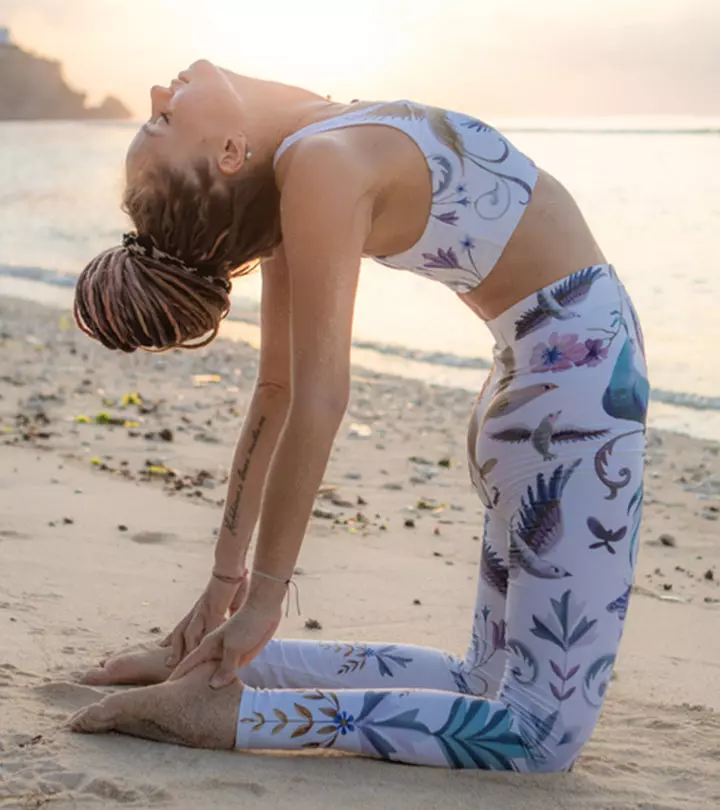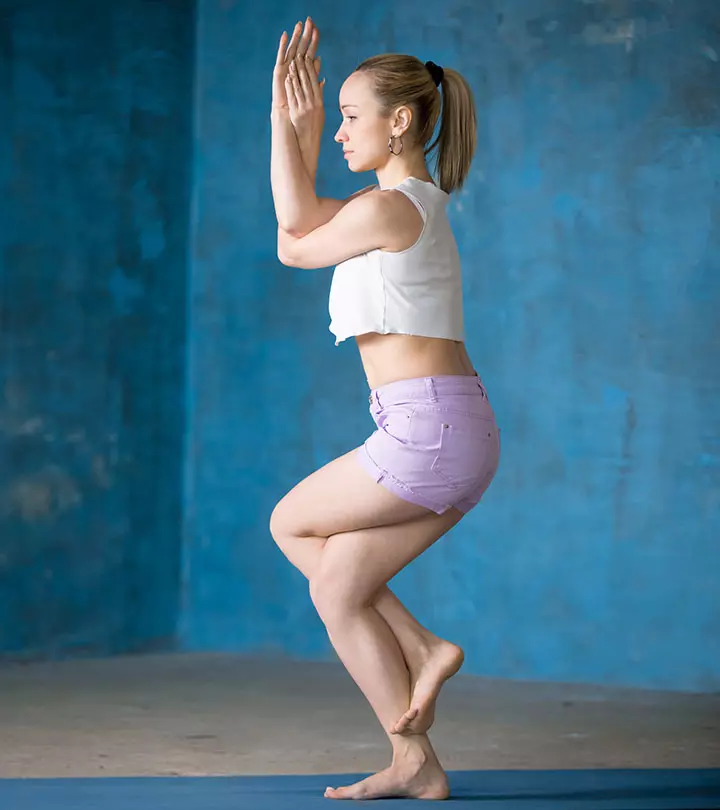How To Do The Ustrasana And What Are Its Benefits
Unlock flexibility and improve posture with this powerful yoga backbend technique today!

Image: Shutterstock
Ustrasana, Ushtrasana, or Camel Pose is an asana. Sanskrit: उष्ट्रासन; Ustra – Camel, Asana – Pose; Pronounced As oos-TRAHS-anna
This asana, popularly called the Camel Pose, is an intermediate level backward bend. Ustra means camel in Sanskrit, and this pose resembles a camel. It is known to open up the heart chakra and increase strength and flexibility. This asana is also commonly referred to as the Ushtrasana.
Everything You Need To Know About Camel Pose
- What You Should Know Before You Do The Asana
- How To Do The Ustrasana
- Precautions And Contraindications
- Beginner’s Tips
- Advanced Pose Variations
- The Benefits Of Ustrasana
- The Science Behind The Ustrasana
- Preparatory Poses
- Follow-Up Poses
What You Should Know Before You Do The Asana
This asana is an amazing back bend. It must be practiced in the morning along with other yoga asanas. But if you can’t manage time for a workout in the morning, an evening yoga routine will also work wonders for you.
This asana must be practiced when your stomach and bowels are empty. Make sure you have had your meals at least four to six hours before your practice.
Level: Basic
Style: Vinyasa
Duration: 30 to 60 seconds
Repetition: None
Stretches: Abdomen, Thighs, Thorax, Ankles, Quadriceps femoris muscle, Groin, Psoas major muscle, Throat, Entire front of the body
Strengthens: Back
How To Do The Ustrasana
- Begin the asana by kneeling on your mat and placing your hands on your hips.
- You must ensure that your knees and shoulders are in the same line, and the soles of your feet are facing the ceiling.
- Inhale, and draw your tailbone in towards your pubis. You must feel the pull at the navel.
- While you are doing that, arch your back. Gently slide your palms over your feet and straighten your arms.
- Keep your neck in a neutral position. It should not be strained.
- Hold the position for about 30 to 60 seconds before you release the pose.
Precautions And Contraindications
It is best to practice this asana under the supervision of a yoga instructor. If you have a back or neck injury, or if you are suffering from either low or high blood pressure, it is best to avoid this asana. Those who suffer from insomnia or migraines must avoid this asana.
Beginner’s Tips
When you are starting off, it can be difficult to reach for your feet with your hands, without causing a strain in your back or neck. You can turn your toes, and elevate your heels. If you still can’t reach for your legs, use a wooden block and place both your hands on them.
Make sure you do not hold this pose for more than 20 seconds when you are a beginner.
Advanced Pose Variations
To deepen the pose, all you need to do is touch your thighs, calves, and inner feet while you are in the pose.
The Benefits Of Ustrasana (Camel Pose)
- This asana helps improve digestion as it massages the internal organs.
- It opens up the chest and frontal portions of the torso.
- It strengthens the back and the shoulders.
- It helps alleviate pain in the lower back.
- It makes the spine more flexible and also helps in the betterment of your posture.
- It relieves menstrual discomfort.
The Science Behind The Ustrasana
This asana is an amazing stretch. It works towards opening up the front of your body while also opening your pectoral muscles and hip flexors. It also tones the limbs, thighs, chest, and abdomen. So, basically, the entire frontal region and the sides of our bodies get involved in this asana.
It also slowly, but surely, works on the circulatory, respiratory, lymphatic, skeletal, endocrine, and digestive systems in the body. Whether you are suffering from diabetes, asthma, thyroid, parathyroid, spondylitis, or bronchitis, this asana works as therapy on all of them. Doctors also recommend this asana to people who are obese or have issues with the kidneys or reproductive systems. It is also said to heal colitis, constipation, and dyspepsia.
The Kundalini stream of yoga believes that this asana can open and awaken the heart chakra.
Preparatory Poses
DhanurasanaBhujangasanaSalabhasanaSupta VirasanaVirasanaUrdhva Mukha Svanasana
Follow-Up Poses
DhanurasanaSarvangasanaChakrasanaVirasanaJanusirsasanaDandasana
Just like the camel survives in extreme conditions in the desert, this asana, if practiced regularly, can help you overcome the extremities that life throws at you, be it physically or mentally.
Read full bio of Shirin Mehdi


























Community Experiences
Join the conversation and become a part of our empowering community! Share your stories, experiences, and insights to connect with other beauty, lifestyle, and health enthusiasts.